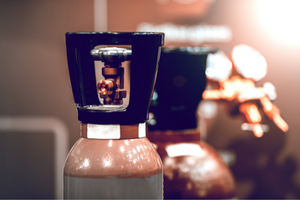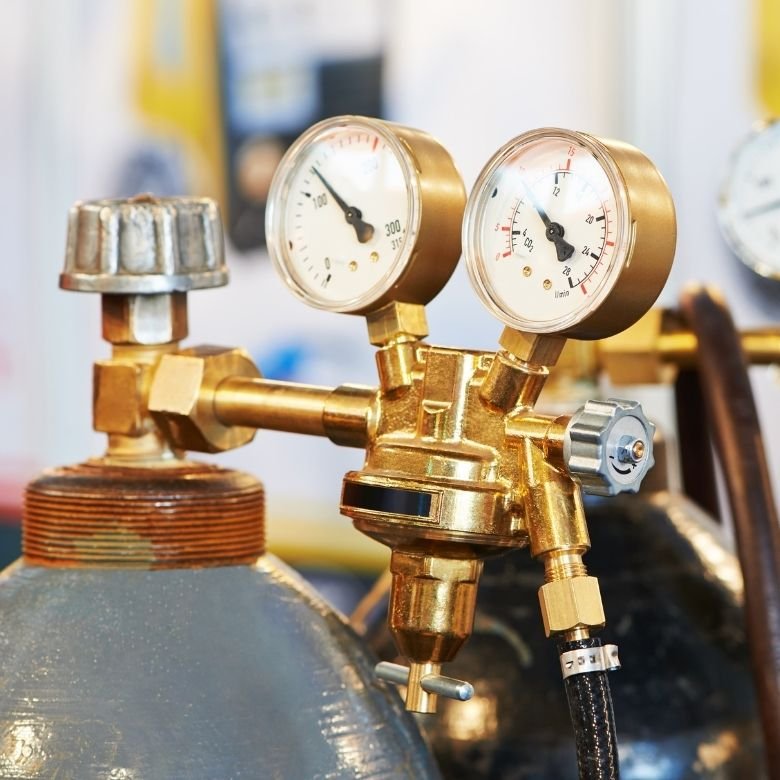Technical (or industrial) gases are gases or gas mixtures produced for use in industrial and manufacturing processes. Industrial gases are used in a wide range of industries: chemical, scientific and research, food, construction, rubber and plastic processing and many others – wherever welding, freezing, propulsion, heating, industrial cleaning, ventilation or testing is required.

Classification and production of technical gases
All technical gases, depending on the economic sectors in which they are used, are divided into the following categories:
- food grade gases,
- compressed gases,
- liquefied gases,
- flammable gases.
Gases for industrial uses are obtained from air by means of cryogenic separation. The next stage always involves separating the components of the liquefied air by means of distillation. The individual gases are then separated using membranes and selective absorption on molecular sieves (separation method for oxygen, nitrogen, argon and helium).
Depending on their purpose, the technical gases produced have different degrees of purity. They contain from a few to a thousandth of a percent of admixtures. The gases used in the laboratory, for example for analyses by gas chromatography (mainly used: helium, nitrogen, hydrogen, argon), are of the highest possible purity. For this reason they are often called specialty gases. When high purity is not required, gases with admixtures of lower purity are used.
The most important technical gases
The most important and most commonly used technical gases are the following:
- Helium, He:
Helium is a non-toxic noble gas, the first in the group of noble gases. It is practically non-existent in the Earth’s atmosphere and therefore the entire demand for this gas is met from natural gas sources containing helium. In its liquid form, helium is an important component of the low-temperature industry. It is an important gas in gas chromatography, where it acts as a carrier gas. However, there are many other uses for it, from flushing and pressurisation to use as a lifting gas.
- Oxygen, O2:
Reactivity is the reason for the industrial use of oxygen as a technical gas. There are only a few natural elements with which oxygen does not combine. Oxidation and combustion processes proceed much faster in an oxygenated atmosphere than in air. Due to this property, oxygen is indispensable in a number of industries. It also plays a key role in the metabolism of organisms, which is why it is used for many applications in water treatment and environmental engineering.
- Chlorine, Cl2:
It is obtained by electrolysis of sodium chloride. Chlorine has a pungent, suffocating odour, perceptible even at low concentrations. The density of chlorine is 2.5 times greater than the density of air. It is non-flammable, but can react explosively with many common substances such as acetylene, ether and turpentine. It easily dissolves in water. It is used to disinfect water, and is particularly popular for disinfecting swimming pool water, for bleaching processes, and for the industrial synthesis of organic and inorganic compounds.
- Carbon dioxide, CO2:
The most important characteristics of carbon dioxide are that it is non-flammable, colourless and odourless. It is highly soluble in water. Carbon dioxide gives beverages their fresh flavour, helps in the treatment of drinking water and is an alternative to aggressive acids in neutralising waste water. In cryogenic form, CO2 becomes dry ice, which is suitable as a refrigerating medium or dry ice cleaner. Carbon dioxide is also used for: grinding, dosing, food packaging, extraction purposes, isolating or removing flavours from natural substances and as well as the production of dry ice and granules.
- Hydrogen, H2:
For a long time, hydrogen was treated as a gas for special purposes: a protective gas in heat treatment or as a cooling gas. Hydrogen is one of the most widely used gases in industry and serves many different purposes: it aids the welding of steel, it is key to industries such as food and electronics, and it is essential for the production of methanol and ammonia, two common chemicals used in many industries. Hydrogen derived from renewable energy sources is called green hydrogen and is now considered an important decarbonisation factor.

Safety rules for working with technical gases
Working with technical gases is extremely hazardous. The improper handling of these substances can have serious consequences, threatening health and life. Depending on the type of gas involved, are following hazard categories exist:
- toxic hazards,
- fire hazards,
- explosive hazards.
Safe work with gases should always begin with the creation of an appropriate infrastructure, such as internal and external gas installations, single- and double-sided and automatic gas expansion stations, high-tightness installations made of copper or steel pipes, as well as additional equipment (pressure reducing valves, shut-off valves). Rooms in which an explosive atmosphere may be created must first be equipped with active safety and ventilation systems. Laboratories or production halls should be equipped with detection systems appropriate for the type of gas and efficient exhaust systems for reaction gases. Moreover, the efficient ventilation of rooms, gas cabinets and storerooms should be ensured.
Cylinders with compressed gases should be protected against overturning, overheating and damage. After having finished work, gas cylinders should be removed and relocated to a place where they will not pose a hazard. Remember that there is a high risk of explosion in the event of a fire or improper transportation (special trolleys should be used for transport). Furthermore, you must not clean the cylinders on your own. Storing flammable gases with incompatible substances, e.g. oxidising gases with flammable or aggressive gases is also forbidden.
Knowledge of basic rules and regulations is the key to safe work with gases. It is worth knowing the rules and regulations and educating each other about safety.
PCC Group as a producer of chlorine
PCC Rokita S.A. sells chlorine, also known as chlorine gas or liquefied chlorine. This product can be directly searched for by its CAS no.: 7782-50-5. The PCC Group offers highest-quality goods to meet the expectations of the industry and consumers. According to demand, it is possible to sell the product loaded onto rail tankers, gas cylinders or special drums. Customers interested in purchasing chlorine will receive comprehensive assistance from the PCC Group.
- https://www.eiga.eu/